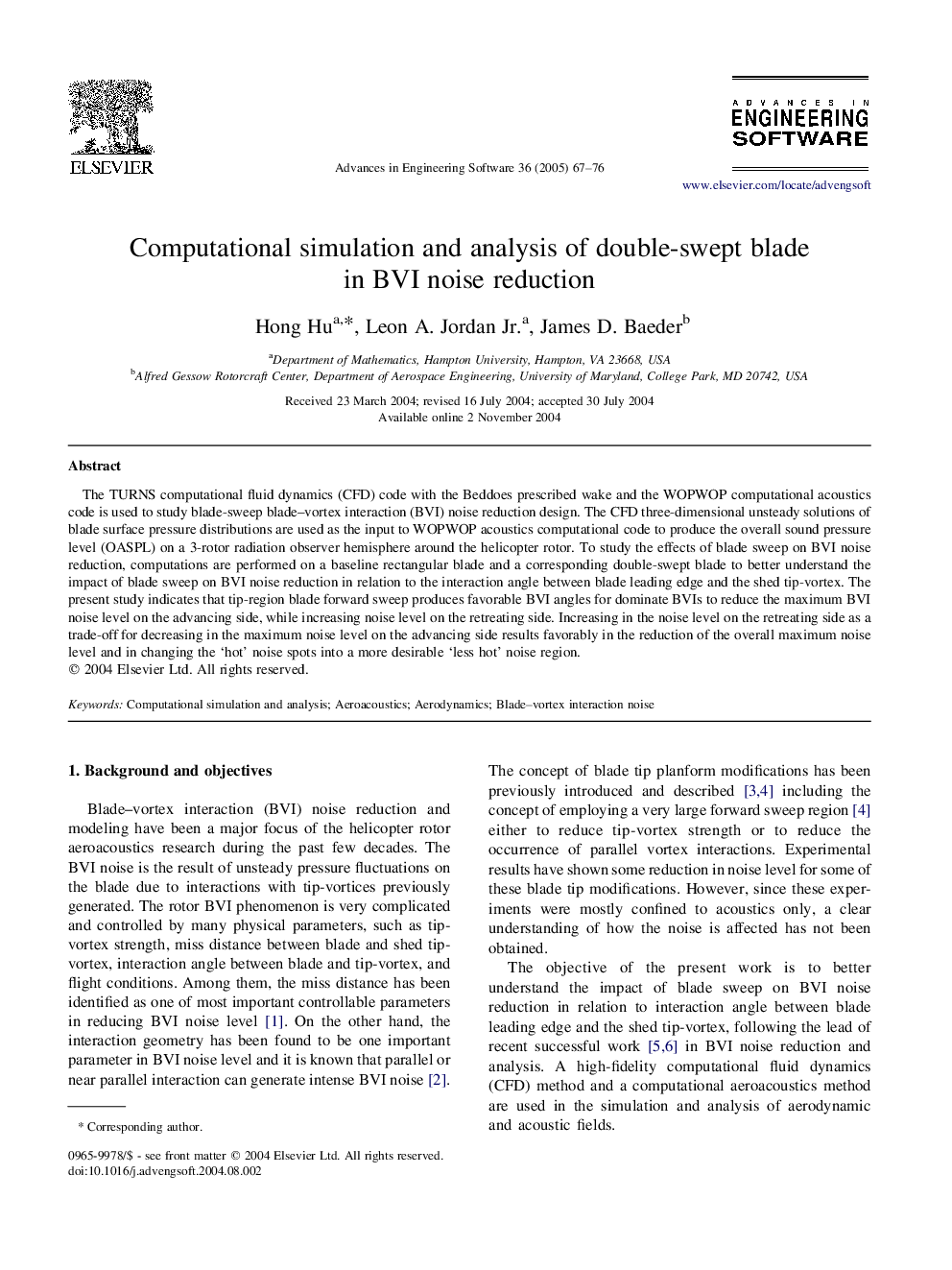| Article ID | Journal | Published Year | Pages | File Type |
|---|---|---|---|---|
| 10370633 | Advances in Engineering Software | 2005 | 10 Pages |
Abstract
The TURNS computational fluid dynamics (CFD) code with the Beddoes prescribed wake and the WOPWOP computational acoustics code is used to study blade-sweep blade-vortex interaction (BVI) noise reduction design. The CFD three-dimensional unsteady solutions of blade surface pressure distributions are used as the input to WOPWOP acoustics computational code to produce the overall sound pressure level (OASPL) on a 3-rotor radiation observer hemisphere around the helicopter rotor. To study the effects of blade sweep on BVI noise reduction, computations are performed on a baseline rectangular blade and a corresponding double-swept blade to better understand the impact of blade sweep on BVI noise reduction in relation to the interaction angle between blade leading edge and the shed tip-vortex. The present study indicates that tip-region blade forward sweep produces favorable BVI angles for dominate BVIs to reduce the maximum BVI noise level on the advancing side, while increasing noise level on the retreating side. Increasing in the noise level on the retreating side as a trade-off for decreasing in the maximum noise level on the advancing side results favorably in the reduction of the overall maximum noise level and in changing the 'hot' noise spots into a more desirable 'less hot' noise region.
Keywords
Related Topics
Physical Sciences and Engineering
Computer Science
Software
Authors
Hong Hu, Leon A. Jr., James D. Baeder,
